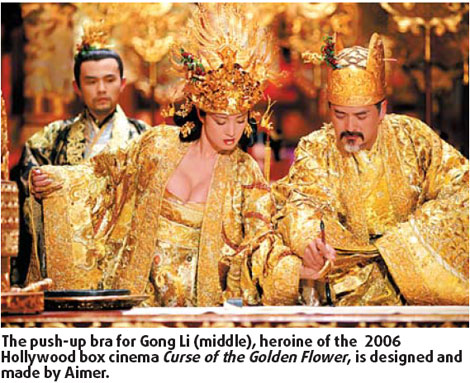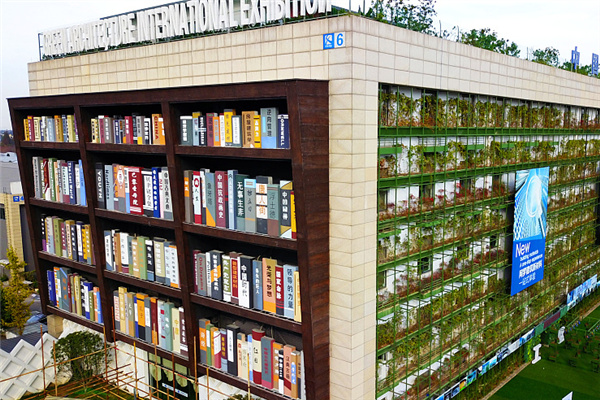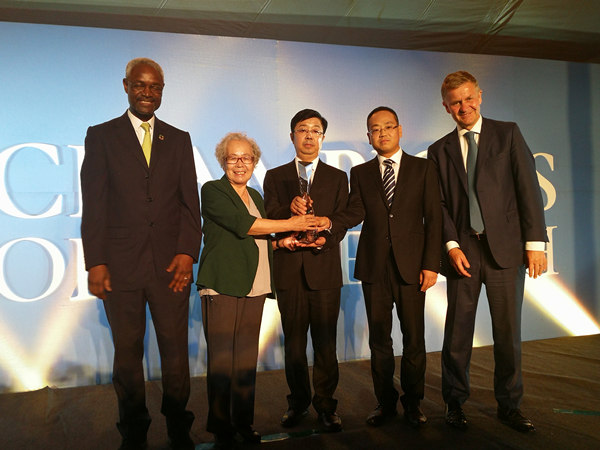


Director Zhang Yimou's 2006 epic Curse of the Golden Flower (Man cheng jin dai huang jin jia), was noted by viewers, not for its grandiose spectacle, but just for the push-up bras worn by superstar Gong Li and up and comer Li Man.
The 21st century uplift for a film set in medieval China was courtesy of China's No 1 lingerie brand Aimer.
It was Gong herself who suggested that director Zhang turn to Beijing-based Aimer Lingerie Co Ltd after he failed to find the suitably stylish and comfortable underwiring in Hong Kong and overseas.
"The product really demonstrates that we have strong research and development strength," says Aimer founder Zhang Rongming. Also the chairman and general manager of Aimer, Zhang says he sees lingerie as not only a fashion but also as a science.
"Many people have asked me why a bra, composed by two small pieces of cloth - or even less - can be more expensive than an article of clothing. I told them that it's because of the science behind it." He says there are dozens of production processes - up to 80 - in a well designed bra and any small deviation can destroy the whole. For instance if the cleavage linking point has less than a 1-mm gap, the asymmetry can occur.
"The function of bras is not just to cover breasts, in addition to protecting breasts, bras should have functions to help build shape, improve a woman's outlook, and help her keep her figure," says Zhang.
Zhang's "metals with memory", or alloys that can return to their original shape after bending or twisting were developed by him in the early 1990s and that patented technology has become Aimer's trump card.
Though he's made a fortune in the lingerie industry, Zhang, with metallurgy master's degree from the Institute of Iron and Steel Engineering, has always been devoted to scientific research and made it central to his beauty-making career.
In 1999, Aimer joined hands with China's leading fashion school, the Beijing Institute of Fashion Technology to set up Aimer Ergonomics Laboratory, a lab for human body data collection and analysis.
In the lab, when a woman clothed in basic underwear stands before a data gathering machine for about 10 seconds, nearly 100 measurements about her body can be recorded.
"Human bodies are different and evolving, we can divide them into categories based on the data collected and follow their changes to adjust our product lines," says Zhang, who declines to say how much he's invested in the lab, only saying "it's huge, but worthwhile".
The research results have been applied Aimer's underwear design an production models. The lab has collected body data from thousands of Asian women and its database is the largest in Asia.
"This basic research work is really a great contribution to the lingerie industry, those information is helpful in tracing the physical conditions of Asian people and will be more valuable as time goes on," says Sun Yi, editor-in-chief of China Fashion Weekly and a senior garment industry analyst.
In 2005, Aimer Materials Detection Laboratory was established for fabric and supplement materials research and development and the Aimer Lingerie Culture Research Institute was opened a year later.
Last year, collaboration between China Fashionable Colors Research Association and Aimer resulted in the Aimer Fashionable Colors Research and Development Base.
"Scientific research and development is the fundamental for a company's sustainable development and guarantees it will keep a leading position in the industry," says Sun.
(China Daily 10/27/2008 page12)













